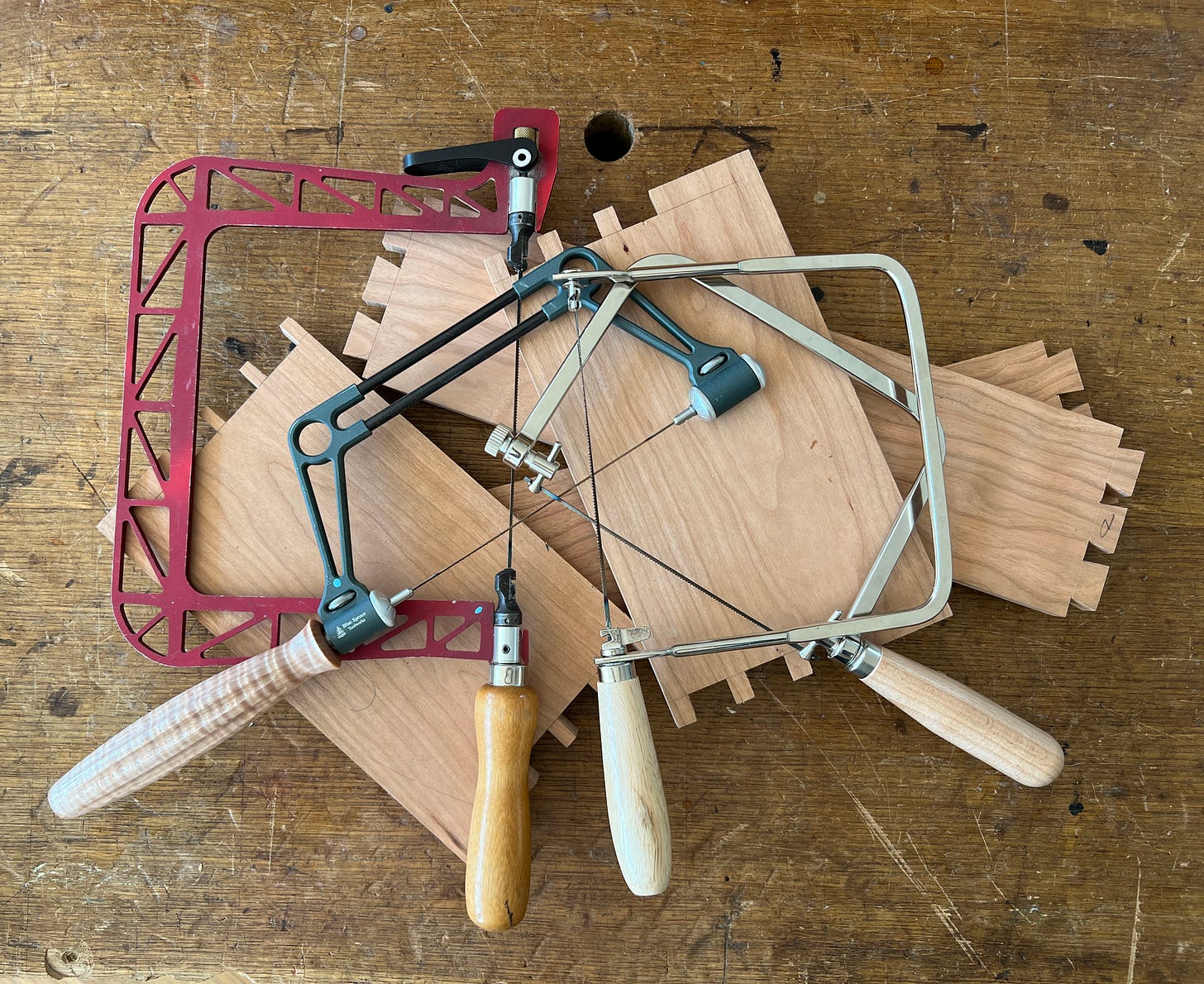I use a coping saw almost every time I cut dovetails – and because almost every class I teach and just about every piece of furniture I build has dovetails, well, I cut a lot of dovetails. I cope (or fret) out the majority of the waste in the sockets on both the tailboards and pinboards, getting as close to the baseline as possible (without going over).
And when I’m teaching, I always feel a bit guilty about the expensive saws I typically use: the now-$165 Knew Concepts 6-1/2" coping saw…and the even more guilt-inducing Blue Spruce coping saw, which is not available right now and was $325 when last it was. Don’t misunderstand: I love both of these tools. The snap lever on the Knew Concepts makes it so easy and fast to change the blade, and its eight-position indexing blade locks make it a snap to change the blade angle. And the Blue Spruce, well, it’s magic. It somehow stays in tension while the blade fully swivels – which means you never have to stop to change the blade angle; you can simply make turns as needed.

But it’s not nice to imply – especially to beginners – that one has to have these expensive tools to cope. One does not. However, many of the coping saws on the market are crap. Their cheap metal frames bend so easily that the saw doesn’t have enough tension to hold the blade tightly enough to cut, much less remain at the angle at which it’s set.1
We just tried out two sub-$20 saw, though, that are good – at least in the short term: The Olson Deluxe Coping Saw and the Kakuri Coping Saw. (If a few classes’ worth of student saw abuse changes my opinion on these, I’ll report back.)
Keep reading with a 7-day free trial
Subscribe to Never Sponsored to keep reading this post and get 7 days of free access to the full post archives.





